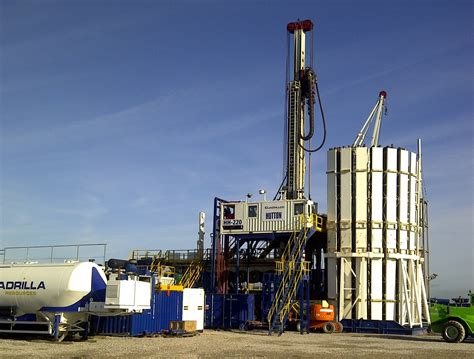Seismic experts at Edinburgh’s Heriot-Watt University confirmed today that rock configurations beneath Britain’s most advanced fracking project raise further questions over commercial feasibility of the controversial technology.
Other English sites besides Lancashire on the Bowland Shale will be even more technically difficult to extract, their research indicates. Devolved governments at Holyrood and in Cardiff have continued to rule out fracking.
The scientists highlight that one significant fault line which they identify appears to have been “mis-represented” – their word – in Cuadrilla’s previously published material.
This matters, say the team, because faulting places significant limits on selection of the best drill sites. They increase the risk of generating induced tremors during hydraulic fracturing.
A fault line they describe as “major” may have contributed to earthquakes that led to a suspension in drilling at the Preese Hall site in April 2011, say Underhill and Anderson.
Lifting Britain’s three-year moratorium on shale exploration last week, new energy secretary Jacob Rees-Mogg repeated to MPs Liz Truss’ insistence that recovering onshore gas is central to the government’s programme to boost energy security.
The government’s announcement to the Commons on Wednesday directly breached a standing Conservative pledge. The party’s December 2019 manifesto promised to resume fracking only when it could be proved to be without serious risk of tremors.
The new Heriot Watt paper comes in the wake of research commissioned in the spring by D-BEIS from the British Geological Survey into the subterranean constraints of rock strata, particularly the Bowland shale reserve, which includes Lancashire. This year’s BGS studies have failed to provide solutions for extraction companies or re-assurance to residents.
“Highly challenged with significant uncertainty”
Heriot-Watt’s Professor Underhill explained; “We believe our research demonstrates the need for detailed, forensic mapping of the subsurface to be carried out as a prerequisite for shale gas exploration, not just in Lancashire, but in any area where shale gas extraction may be attempted”.
“This will allow the subsurface geology to be fully understood and the risk of seismic hazard evaluated in advance of drilling.
“It is clear that there is much more structural complexity and many more faults in the subsurface than evident at the surface”.
The professor went on: “Our structural interpretations suggest that this particular shale gas reserve, known as the Bowland Shale gas play, remains highly challenged with significant uncertainty in its resource estimates, the planning of well site locations, horizontal wellbore pathways and risk of induced seismicity on faults that are seismically resolvable and those that are sub-seismic scale.”
The team caution that, in such a structurally complex area as the Ribblesdale fold-and-thrust belt in the Craven Basin in Lancashire, sub-seismic faults which cannot be seen on the data, such as those that led to the earthquakes leading to drilling’s halt 2019, should also be anticipated, and plans drawn up to mitigate for their occurrence and reactivation.
The team’s conclusions support calls that were made for 3D mapping at extraction sites in the 2012 report commissioned by Whitehall’s Department of Energy & Climate Change (DECC), the precursor of the Oil & Gas Authority (OGA).
Keele University’s Professor Peter Styles, a global authority on induced tremors, wrote the DECC report.
Professor Styles backed the Heriot Watt revelations: “This is a very significant and impactful paper in the context of UK unconventional gas exploitation. As the authors ably demonstrate, this was an area which had significant geological complexity and that shale gas development would pose extraordinary challenges.
“In fact, despite the ensuing problems of seismicity, the sites in the Lancashire Bowland Basin are probably simpler than many of the other UK PEDLs ( – petroleum exploration & development licences – ) which mostly lie beneath areas which have had significant coal mining with its associated subsidence and mining-induced earthquakes”.
“This paper demonstrates, through robust forensic analysis and interpretation, the issues which geology poses for any future attempts to exploit onshore UK shale resources in a profitable and environmentally (and sociologically) acceptable manner.
“It should be read carefully and the lessons learned before any future projects are proposed”, said Keele’s Professor Styles.
Cuadrilla have been contacted for comment.




